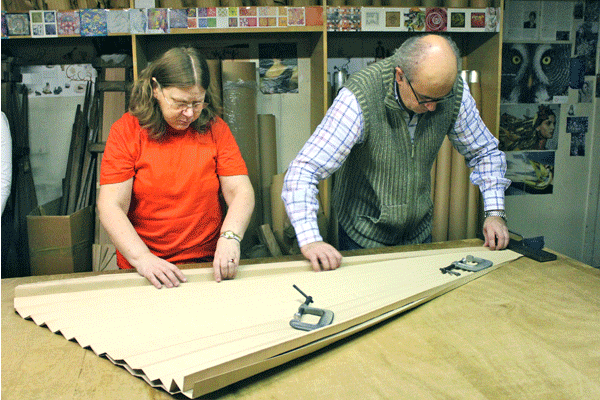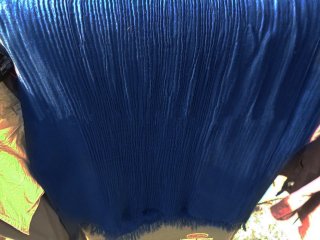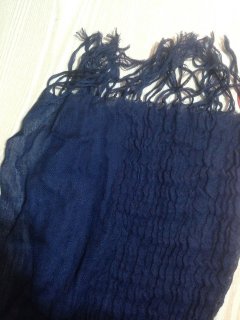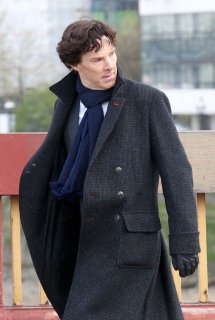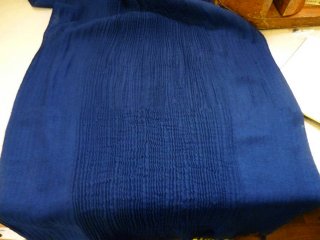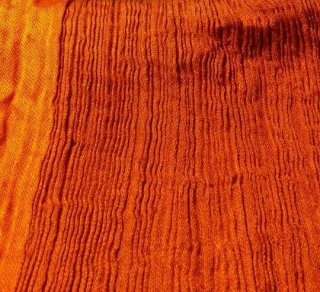gius
Active Member
- Joined
- Jan 8, 2006
- Messages
- 10,859
- Reaction score
- 9
i think it's just her photo that makes the pleats look fine.. the thread she's using is fairly thick. a resulting pleat/ridge might be a little less than 0.5cm in total, with that kind of fabric
i'd like to try to make a really fine one too
so you want to put vertical pleats on a 2 yard long fabric
you can definitely do that but make sure to keep the fabric even on the pole.
like if you were to wrap the second layer of fabric accidentally on the bias, your pleats will change direction and so will the first layer of fabric (it will have a crisscross pattern)
don't need to dye it.
make sure you have very good ventilation (even if you smell nothing.)
you remove the string only after it is bone dry. air dry is best
we met an artist in class, who used a special silk from japan
gunma silk... seemed expensive
it has a natural gum that makes it stiff. and instead of boiling the silk, she just washes it and lets it air dry. it forms the pleats that way too, but it's dry clean only afterwards.
she also invented some way to make it dry faster--
she put the fabric in a sort of box with good air circulation... i can't remember exactly, but it didn't seem complicated.
so, if you want your project easy to care for, while permanent, synthetic is best
i've only tried polyester but not acetate or nylon , others...
--
so through this whole thread daniellat, you were more interested in making a texture that's like pleats?
or were you also interested in making an ordinary pleated skirt permanent?

premierschoolwear.com
i'd like to try to make a really fine one too
so you want to put vertical pleats on a 2 yard long fabric
you can definitely do that but make sure to keep the fabric even on the pole.
like if you were to wrap the second layer of fabric accidentally on the bias, your pleats will change direction and so will the first layer of fabric (it will have a crisscross pattern)
don't need to dye it.
make sure you have very good ventilation (even if you smell nothing.)
you remove the string only after it is bone dry. air dry is best
we met an artist in class, who used a special silk from japan
gunma silk... seemed expensive
it has a natural gum that makes it stiff. and instead of boiling the silk, she just washes it and lets it air dry. it forms the pleats that way too, but it's dry clean only afterwards.
she also invented some way to make it dry faster--
she put the fabric in a sort of box with good air circulation... i can't remember exactly, but it didn't seem complicated.
so, if you want your project easy to care for, while permanent, synthetic is best
i've only tried polyester but not acetate or nylon , others...
--
so through this whole thread daniellat, you were more interested in making a texture that's like pleats?
or were you also interested in making an ordinary pleated skirt permanent?

premierschoolwear.com
Last edited by a moderator:




 maybe you could use that pleating board you posted on the 1st page.. and then steam the fabric. i saw a video of issey miyake doing that with his fabrics
maybe you could use that pleating board you posted on the 1st page.. and then steam the fabric. i saw a video of issey miyake doing that with his fabrics
